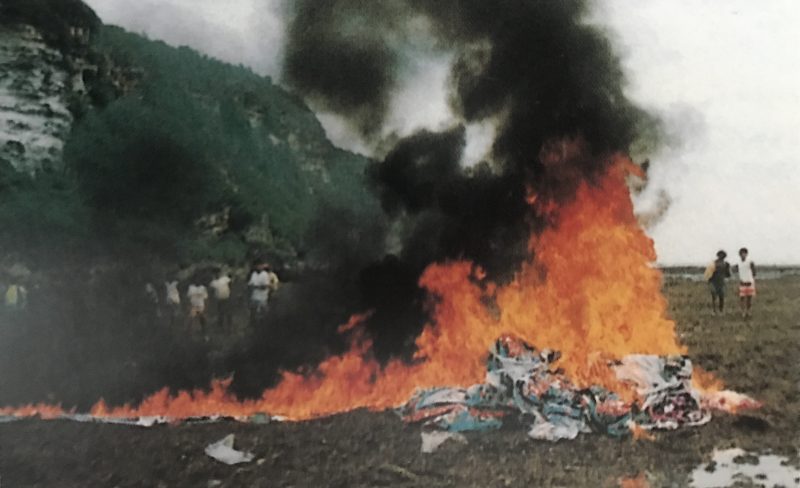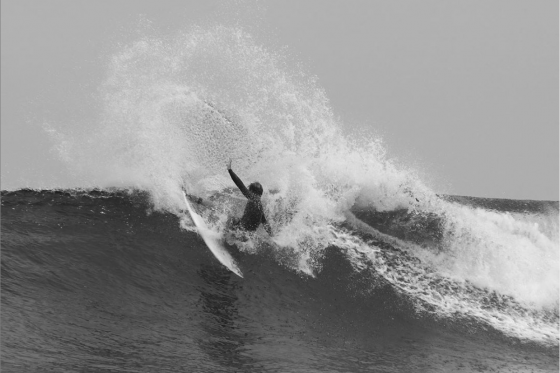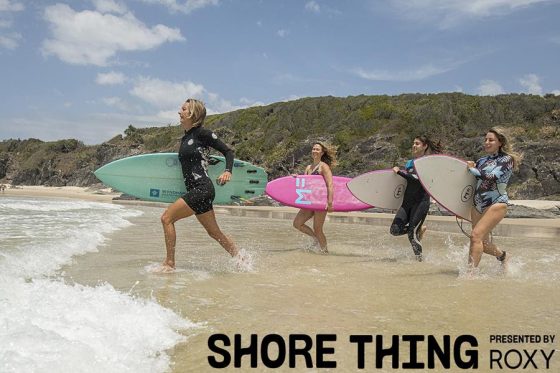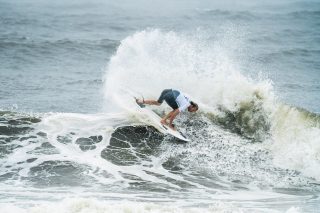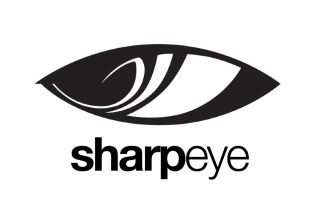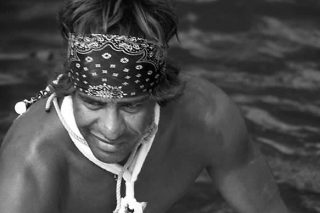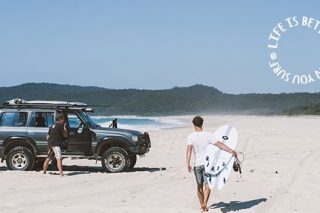
The State of Brand Management: How the world’s most popular brands did it and what the new crew is aiming for in today’s market. Hear from an eclectic mix of yesterday’s heroes and a few of today’s top Brand Managers on the role of good brand management in todays market. Including thoughts from Bruce Raymond, Garry Wall, Neil Ridgway, Andrew Flitton and experts Dean Bennet and Alex Crave. This story has been skilfully crafted by Phil Jarratt a former Quiksilver Exec as well as Author of The Mountain & The Wave and Salt’s & Suits. ASBMAG regular contributor Phil Jarratt is uniquely positioned to shine a spotlight on the current State of Brand Management.
The original article appeared in Australasian Surf Business Magazine in January 2018 and for our Professional Edition subscribers. Not a subscriber yet? Here’s how… SUBSCRIBE
THE STATE OF BRAND MANAGEMENT
Almost 20 years ago when I was doing some work for Quiksilver I wrote a paper that was circulated within the global management group about the rising resentment towards branding.
It was heavily influenced by the recent publication of Canadian author Naomi Klein’s ground-breaking work, No Logo, but also included my own theories about youthful surfwear consumers turning away from the brands their fathers wore – a direct consequence of the big surf brands pushing into the mall majors to create volume to appease shareholders. A couple of people in the management chain must have thought my paper made sense because I was asked to present it at a global sales and marketing meeting at Les Arcs in the French Alps, where it almost ended my executive career in the surf industry before it had properly begun.
A lot of people in the room started fiddling with their bindings and thinking about another session on the mountain before the light was gone. Others looked thirstily in the direction of the bar. Still others – mostly the generals – just looked at me in disbelief. This was heresy! You couldn’t say this stuff. You couldn’t even think this stuff. At the time the Big Three were fast-tracking into the billion dollar stratosphere. Their brands ruled, and would always rule. Amen, pass the Kool-Aid.
The big bosses were kind of right – there was still plenty of tread on the tyres for the big brands, even as they rolled out into the mass market, driven by the growth prerequisite of any public company – and Naomi Klein and I were kind of wrong about a few things. She thought globalization would cause a revolution, I thought a couple of hundred more fat slobs coming out of WalMart in Quik or Bong tees would result in brand desertion – the apocalyptic endgame of that ‘90s mantra, “big is the enemy of cool.”
But there was also an element of truth here. Brand arrogance would ultimately almost bring down the big guys, and set in train a shift in brand preferences that has become far greater than the management teams could ever have anticipated. Now, as many of the legacy brands have given up much of the sacred ground of the core market to startups, there is so much more choice, not just of logo but of fundamental brand values that govern purchasing power. Now more than ever, when a surfwear consumer buys Patagonia, it’s because he wants to save the world. When he buys Rip Curl, it’s because he wants to be corer than thou. Now more than ever, the murky science of brand management has to be precise.
So what the hell is brand management? So much bullshit has been written about “branding” that it’s easy to forget that it originated with cattle being herded into a pen and burned with a red hot iron! If you do the rounds of the business studies websites you’ll pretty much get confusing and repetitious babble like this: “Brand management begins with having a thorough knowledge of the term ‘brand’. It includes developing a promise, making that promise and maintaining it. It means defining the brand, positioning the brand, and delivering the brand. Brand management is nothing but an art of creating and sustaining the brand. Branding makes customers committed to your business. A strong brand differentiates your products from the competitors. It gives a quality image to your business.”
All of which could be summarized in three words: build brand loyalty. In the surfing context, I’ve always liked the simplest assessments. How could you ever top Quiksilver founder Alan Green sending off a very young Bruce Raymond to California to oversee the brand’s first licensing deal with this instruction: “Make them like us.”
Greeny meant make them the same as us, by which he not only meant recreate the revolutionary scallop-leg, high-yoke boardies, but also recreate the no-bullshit Torquay surf mongrel ethos. It was a great licensing philosophy, even though it didn’t always go strictly to plan. (In Europe the first Quik boardies had underpants sewn inside them, which is about as un-Torquay as you can get.)
Grooming a successful licensee is only one element of what we now know as brand management, but if we just slightly skew the meaning of Alan Green’s words they also form the essence of the whole wide world of brand management. “Make them like us.” Better yet, make them love us! That’s the guts of the whole thing. To put it into modern marketing-speak, “maintain subcultural credibility”.
Branding, a Brief History
I suspect maintaining subcultural credibility was the last thing on Jack O’Neill’s mind when he invented the modern wetsuit in 1952 and started selling them from a pop-up shop (generations before the term was born) in chilly San Francisco. He just wanted to be able to enjoy a session without freezing! But perhaps inadvertently he established surfing’s first great brand and became its first great brand manager – his authentic surfer persona and the technical savvy of his product the twin drivers of its success.
Ironically, 20 years later Jack would also become the guru of succession planning when he lost his left eye while testing son Pat’s invention of the surf leash. The leggie needed a bit more R & D, but Jack’s new pirate look became the brand motif for the next 40 years, and Pat turned out to be one of the few successful second-generation founder/brand managers.
The next two great brand managers in surfing were more like hucksters than surfers, but both played an important role in promoting surfing to a broader audience. Kimo Wilder McVay was a Honolulu nightclub talent manager (he discovered Don Ho) when he decided to do something about the declining fortunes of surfing’s biggest name, Duke Paoa Kahanamoku. In 1961 he formed the Duke Kahanamoku Corporation making Duke a figurehead for Duke’s Restaurant in Waikiki’s International Market Place and created the Duke Kahanamoku Surf Club, which used the talents of budding surf stars Joey Cabell, Paul Strauch, Fred Hemmings and Butch Van Artsdalen to sell everything from skateboards to surf trunks to pop-out surfboards, all bearing Duke’s name.
Just as the whole thing was about to disappear into a swamp of tackiness, McVay hired schoolteacher and big wave rider Fred Van Dyke to create a Duke Kahanamoku invitational surfing contest at Sunset Beach which finally gave the brand credibility with a new generation of surfers – particularly after the inaugural event was won by cute-faced local man-child Jeff Hakman.
In California an entrepreneur named Duke Boyd used McVay’s surf team concept to promote a brand he established in 1960 called Hang Ten. Over the next decade a roster of just about every quality surfer who emerged became aligned with the brand, and when Boyd sold it to the supermarkets in 1970, he did it all over again with Golden Breed, and when Golden Breed began to falter, he did it all over yet again with Lightning Bolt. To both Duke and Kimo, brand management was rather like managing a sausage factory.
In the 1960s Platt’s and Adler’s became the first boardshorts brands in Australia, quickly moving into limited surfwear ranges where they were joined by Kream and Baron, who attempted to merge surf with fashion and failed. But by far the best brand manager of the period was surfboard manufacturer Shane Stedman, whose Shane Gang featured the best surfers and shapers in the country, plus a few rock stars and hot chicks, and soon moved from hardware into jeans and – most successfully – into sheepskin “Ugg” boots. Stedman used his outgoing personality and sharp sense for trends to go where no surf company had gone before, and it must be said, where some never wanted to go again.
The Shane business model was built on loveable hype. Alan Green’s Rip Curl wetsuits and his subsequent Quiksilver boardshorts were both built around a distinct lack of bullshit. Residing at the crossroads where form meets function, they became the defining products that created the modern Australian surfwear industry and ultimately influenced the world.
These brands emerged nearly half a century ago with Gordon and Rena Merchant’s Billabong not far behind. Yet they remain the inspiration for and the greatest influence on the generations of brands that have followed, even though two of the Big Three now live in the ethereal world of capital management. Still, the brands themselves retain some clout.
What did Quiksilver, Rip Curl and Billabong do?
Wanting to hear what the brand managers themselves thought about the evolution of surf biz, I sent out a brief questionnaire to an eclectic mix of yesterday’s heroes and a few of today’s. For an outside-the-tent-pissing-in viewpoint, I also consulted one of Europe’s leading brand doctors, a boutique agency that successfully made the transition from surf to fashion and back again.
Bruce Raymond
The first port of call in any discussion about surf brand management has to be Bruce Raymond, the one-time pro surfer who designed and finessed the global image of Quiksilver over decades at the helm of its licensing branch, Quiksilver International. Amongst Bruce’s credits (some of them shared) are the first branded surf videos (The Performers, Quiksilver Country etc.), the dream-tour instigating Quiksilver Pro G-Land, the Quiksilver Crossing and The Young Guns series. He also played a part in grooming Kelly Slater and Lisa Andersen as brand icons, so it came as no surprise that when asked his call on the heroes and legends of surf brand management, Bruce nominated himself, tongue only slightly in cheek.
This is, after all, the man responsible for what many people regard as the defining moment in surf brand management – when Raymond, backed by members of a local martial arts society, seized a truckload of counterfeit print fabric from a factory in Bali. “You are stealing our spirit!” he screamed from the back of the truck. Raymond then dumped the fabric on the low tide reef at Uluwatu and made a bonfire of it. The photo, a visual warning to all counterfeiters, appeared in Newsweek magazine and around the world.
Now busy developing a mid-life, late-blooming talent for painting, as well as becoming a health foods entrepreneur, Bruce’s responses were clipped and to the point. What is the role of a brand manager in the surf industry today? “To put your brand at the forefront, and if that can grow the industry as it goes… all the better.”
Are there any major differences between managing a surf brand and a fashion or sports brand? BR: “Yes and no.”
Who makes the best brand managers – salts or suits? BR: “Salts, with suits just behind them, or off to the side.”
What’s the future of brand management? BR: “The suits have reduced and shrunk the industry, so I suspect that the people involved in brand management now are just shuffling things around as they don’t have the means to do more than that. As I told Greeny circa 2007, the kooks have taken over.”
“The suits have reduced and shrunk the industry, so I suspect that the people involved in brand management now are just shuffling things around as they don’t have the means to do more than that. As I told Greeny circa 2007, the kooks have taken over.” Bruce Raymond
Gary “Spurter” Wall
Quiksilver’s contemporary Bruce Raymond, Gary “Spurter” Wall, echoed many of Bruce’s sentiments, including his mentor’s self-selection as a brand management legend. But he also showed a clear understanding of changing roles in a changing landscape. “A brand manager’s job today is to define and articulate the ‘why’ of the brand. I think the principles are the same for surf, fashion, sports or anything else – defining and executing brand strategy. What your brand represents in the consumer’s mind might be completely different but the management principles would be similar. Ultimately, it’s about getting consumers to join your tribe, and as long as a brand continues to contribute to the culture, those in the tribe will continue to believe in it. Salt is in the blood, suits can be purchased, so in choosing the best attributes for a brand manager I would still lean on the side of educated salts with a degree from the school of life. You can’t study the X-factor. Today we need strong leaders who can inspire a well-rounded team of specialist individuals.”
“Salt is in the blood, suits can be purchased, so in choosing the best attributes for a brand manager I would still lean on the side of educated salts with a degree from the school of life. You can’t study the X-factor. Today we need strong leaders who can inspire a well-rounded team of specialist individuals.” – Gary “Spurter” Wall
Neil Ridgway
One-time Tracks editor and long-time Rip Curl global brand manager (although he wears a much fancier title than that) Neil Ridgway is an affable fellow with a penchant for sharing his many opinions with the world at large. He is also in the unique position of representing the brand values of the only surf brand in the world that is still doing what it set out to do – disprove the mantra that big is the enemy of cool. Privately-held Rip Curl’s growth has had its ups and downs over its half-century in the marketplace, and of course its monitoring is more difficult than for public companies, but trust me, the Curl is in a pretty good place and Ridgway can take some of the credit for that.
Ridgy said: “We are a brand marketing company, so my job is to make sure that the message and product that is delivered to surfers respects the brand’s vision and values and purpose in all territories, across all channels, at all times. The brand manager’s job is to get everyone singing from the same hymn book, and then to strategize around those assets. In Rip Curl’s case it’s to be the ultimate surfing company and to keep our feet planted firmly in the sand and our minds in the lineup.”
The brand manager’s job is to get everyone singing from the same hymn book, and then to strategize around those assets. Neil Ridgway
He’s good, Ridgy! Even when he trots out the clichés, they’re usually quality ones. But it can’t all be about vision and values, can it Neil? What about product?
“If you don’t make it with quality and you don’t respect the value proposition to the customer at all times, they will walk away pretty quickly. We know this because we arethe customer, and we test all the products ourselves and on our pro team.”
Ridgway declined ASB’s offer to nominate a legend or hero of surf brand management, saying, “No one person is bigger than the brand. People come and go, but the values and vision of the great brands never waiver.” However he was not so sure that the value and vision was any different to other sports or even fashion: “The theory (of brand management) is the same in terms of strategy. Only the tactics are different. The surfers are the most potent connection with the audience we have, so you need to use them as an amplifier of brand voice. You also need to find the emotional connection to surfers and the things they really love about you, which in Rip Curl’s case are wetsuits and tech products, and (marketing campaigns like) The Search, and everything it means deep down. The rest flows from there.”
A salt or a suit in the brand manager’s chair? “Salts. The suits can never really understand because they will never be the customer.”
Andrew Flitton
Another long-termer in the branding trenches is Billabong’s Andrew Flitton whose perceptions – like so many first generation “brand understanders,” Raymond, Walker, Law, Warbrick, Merchant, Hurley, Lee etc. – are framed by the journey from surfer to surfwear executive. “In those days knowing what was real surf was not so important because the customer had nothing to compare it to, and was basically stoked on anything,” he says.
“With limited media and an inflated importance of word of mouth, legends and heroic stories were shared between surfers, and early survivor brands like Rip Curl capitalized on these legends through their associations with the best of the time, like Wayne Lynch. In those days the tribe was small and surfers travelled and stayed together in tight-knit groups. The commercial leaders had perfect relationships between commerce and creativity, and were able to fan the flames of intrigue through making products that improved the surfer’s experience and were endorsed by the legends.”
Flitton hypothesizes that this successful formula remained basically unchanged into the 1990s – the industry’s heyday – but in the new millennium expansion has led to dilution and become difficult to control. “Retailers began having more influence over the outcome of the brands and the brands were forced to listen to maintain sales. New managements were then grappling with maintaining the balance between staying in business and remaining relevant. The push for product marketing was overtaking storytelling and the need for personnel that could activate overtook the need to understand.”
Andrew Flitton is only too aware that old hands in the industry are calling this phase “the race to the bottom,” but he remains optimistic about the future of the surf brands. “There’s a lot to be learned from Patagonia and the brands that are trying to make a difference. There are many changes ahead for the surf industry and retail in general, but surfing has a kind of magic and it will always prevail.”
Dean Bennet & Alex Craven
Englishman Dean Bennett graduated from Plymouth University at the turn of the century with a degree in “surf science and technology,” which sounds like he should be designing wave pools, but in fact his specialty was marketing, which led him to a job at Quiksilver, just as the European company was imploding over the purchase of Rossignol. Bennett left to start his own London-based branding and PR agency, Coffin On Cake, with partner Alex Craven. When the surfcos began to tank, Coffin switched focus to fashion, but their final gig before selling the agency last year to start And Consultancy in Portugal was to create global hype for Red Bull’s big wave vid “Let’s Be Frank”. Few people of their generation understand crossover branding in the youth market better than Bennett and Craven.
Bennett said: “In any industry the role of the brand manager is to see that the credibility and the authenticity stays with the brand. It should be the number one point with every brand because as soon as you lose those things you’ve lost your core and you’ll never get it back.”
Craven added: “When people sell out they lose everything, and you can never come back from that. Our advice to people was always never relaunch, never rebrand. When people hear a ‘re’ they know that you’re admitting failure.”
Bennett: “We had so many people rock in and say they wanted to start a tee shirt brand tomorrow because they were so sick of how commercial the industry had become, and they wanted to do something cool and credible. As soon as I heard ‘cool and credible’ I switched off. If you’re talking about it you’re not.”
Craven: “Their ideas are not coming from any real passion, they’re just reacting to what they perceive as the faults of others. But many of the really cool and credible brands evolved simply from the passion of the people who started them. I think you can tell when a brand has that if you strip away the product entirely and just focus on the sticker – if a kid can love and care about that sticker, then you have a successful brand.”
Bennett: Well, speaking about brands rather than individuals, I like what Vissla is doing,. They have strategically positioned themselves very well. They’re not high performance and they’re not total hipster. They’re somewhere in between and that’s a safe place to be because you’ve got room to grow and maintain credibility at the same time. Vans is the classic case of clever brand management and sustainable growth. Outside of surf to some degree, I think Red Bull is a very well-managed brand. They put so much money into marketing but it seems to pay off in sales domination.”
Craven: “Vans has a huge product range and it’s everywhere, but their marketing is focused on footwear and skate, so they’ve maintained credibility while broadening their market, which is not easy to do, because as many brands find, you can’t be everything to everyone.”
Craven: “The medium has changed but the message and the theories remain the same. What’s really changed is the speed of change, and you have to manage around that.”
Bennett: “There’s a relationship between hype and delivery, and if you get it wrong the customers will walk away. Too much hype and you don’t deliver up to expectation, you’re in trouble. That has become more pronounced in the new media world. Key messages can sell better than swamping the market with your stuff.”
Like this article? Email us your thoughts or invite a friend or colleague to join us and support independent surf journalism for less than $2 per week.
